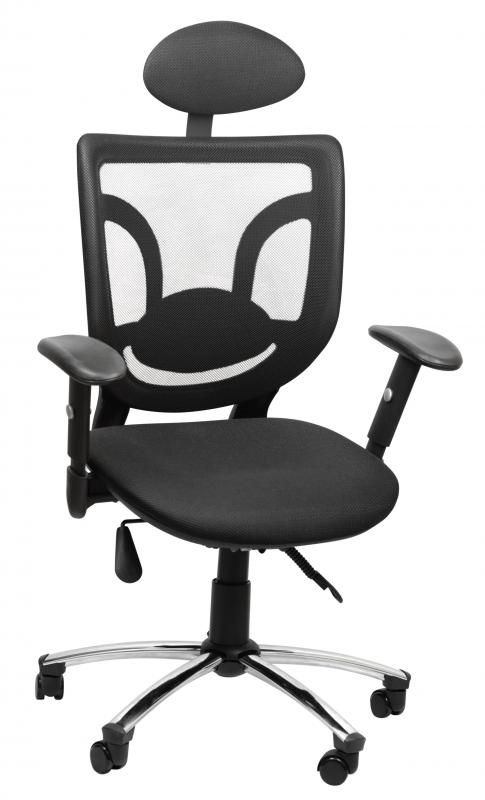At HomeQuestionsAnswered, we're committed to delivering accurate, trustworthy information. Our expert-authored content is rigorously fact-checked and sourced from credible authorities. Discover how we uphold the highest standards in providing you with reliable knowledge.
What is Ergonomic Design?
Ergonomics is a branch of science drawing from physiology, engineering and psychology studies. It seeks to harmonize the functionality of tasks with the human requirements of those performing them. Ergonomic design focuses on the compatibility of objects and environments with the humans using them. The principles of ergonomic design can be applied to everyday objects and work spaces.
The word "ergonomic" means human engineering. Ergonomic design is said to be human-centered design focusing on usability. It seeks to ensure that human restrictions and capabilities are met and supported by design options. In an ergonomic environment, equipment and tasks will be aligned.

Mass production of products does not take into account that humans come in various shapes and sizes. The proportions of a chair that work well to support a six foot tall body frame can add stress and challenges to a smaller sized person. Mass production can make the most commonplace products difficult to use. Considerations like the size and shape of tools and how they fit into the hand that will use them are important to ergonomic design. A can opener requiring little effort from the strong hands of a twenty-year-old male might present significant challenges for the weaker hands of a seventy-year-old female.

A thorough understanding of the specific tasks an object is intended for is central to achieving the ergonomic design goal of aiding the human form in executing them. Quality ergonomics is thought to reduce the risk of injury and errors by ensuring that technology and humanity fit and are working together. Greater accuracy and more efficient performance is achieved by meeting human needs with technology. Quality of life is also improved.

Poor lighting and glare from computer screens in work spaces can detract from performance by adding difficulty. Ergonomically incorrect lighting can result in neck or eye strain and shorten the time a worker is able to perform a task in this environment. Ergonomically correct lighting can make the same task easier by improving a workers ability to see, reducing neck and eye stress, and allowing performance of the task longer and more efficiently.

The need for ergonomic design is thought to have originated during World War II, when it became apparent that military systems could be more effective if they took into account the environmental requirements of the soldiers operating them. After incorporating ergonomic changes in some military systems, efficiency and effectiveness as well as safety were improved. The number of manufacturers and business recognizing the benefits of ergonomic design principles continues to grow.
AS FEATURED ON:
AS FEATURED ON:















Discussion Comments
I am in the process of engineering new workout tool/tools, and this information is extra helpful.
At its simplest definition, ergonomics literally means the science of work. So ergonomists, i.e. the practitioners of ergonomics, study work, how work is done and how to work better.
It is the attempt to make work better that ergonomics becomes so useful. And that is also where making things comfortable and efficient comes into play.
@lmorales - Space planning is a part of ergonomics in the office as well. It's important to think of walkways and lighting, too, because it can present big issues. I was in design school a while ago and we had a project where we had to make a room ergonomic through furniture, textiles, and other means. The room had fluorescent lighting, no windows, commercial grade carpet and other issues and we had to alleviate them. It was fun.
@BelugaWhale - I agree as well with your statement about the abundance of ergonomics in office interior design. I think there is great purpose behind it and between that and sustainability there are a lot of new ideas to be had out there. The ergonomic work station design was established to prevent back, eye, neck, and general health issues from arising. It goes much further than just a few pieces of furniture.
@bbpuff - The ergonomic office designs certainly are a little off the wall at first, but once you get used to using the items everyday, it makes sense. I think the biggest emergence of ergonomics is in the ergonomic furniture design that's really sweeping across the world.
A lot of people feel strange using ergonomics in their lives everyday. I think the funniest product from all of this is the ergonomic keyboard design and the ergonomic mouse. I do admit that ergonomic mice are much more comfortable, but as far as the keyboard it is just wild. Too wild for me.
Post your comments